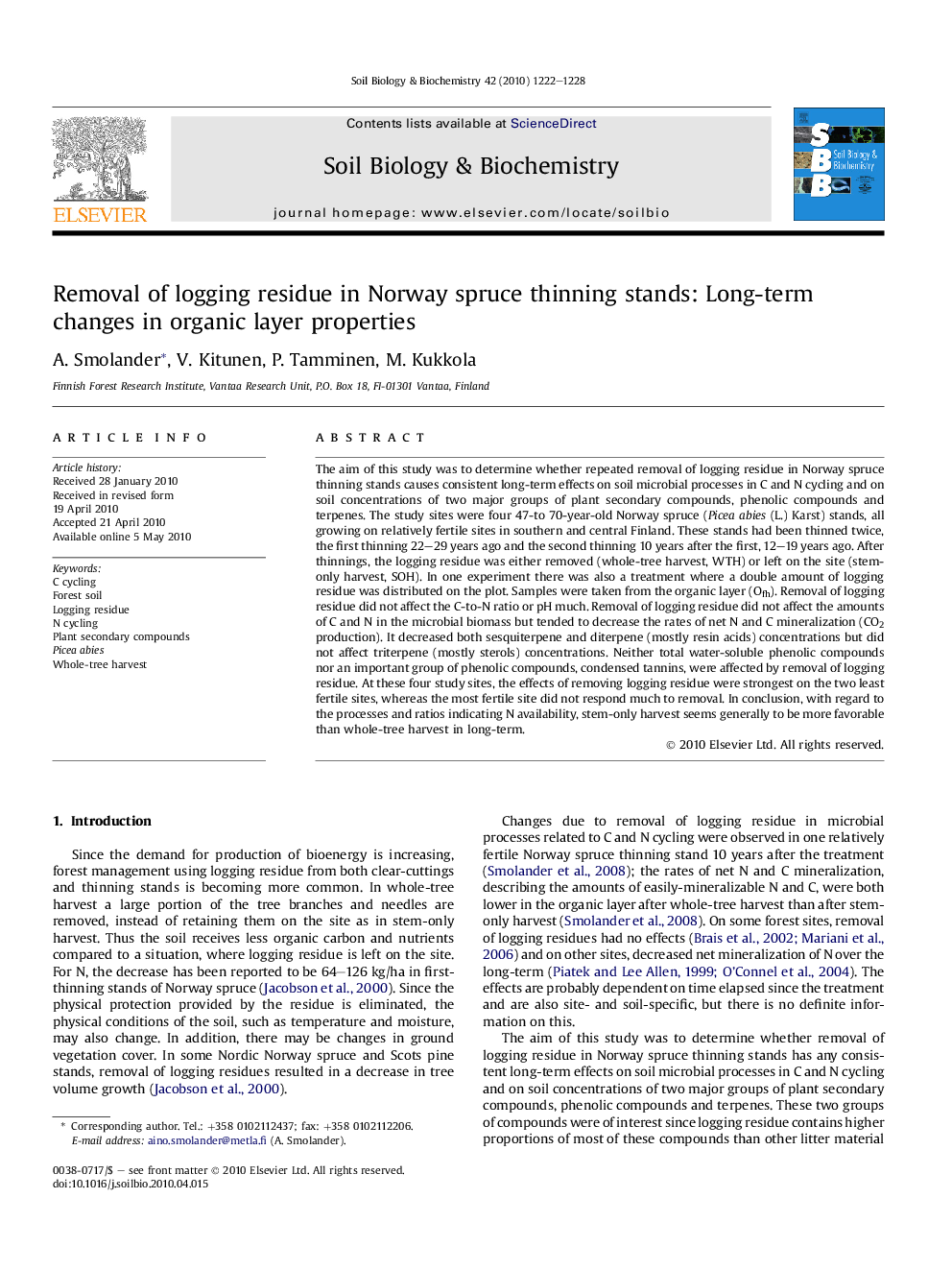| کد مقاله | کد نشریه | سال انتشار | مقاله انگلیسی | نسخه تمام متن |
|---|---|---|---|---|
| 2026091 | 1070019 | 2010 | 7 صفحه PDF | دانلود رایگان |

The aim of this study was to determine whether repeated removal of logging residue in Norway spruce thinning stands causes consistent long-term effects on soil microbial processes in C and N cycling and on soil concentrations of two major groups of plant secondary compounds, phenolic compounds and terpenes. The study sites were four 47-to 70-year-old Norway spruce (Picea abies (L.) Karst) stands, all growing on relatively fertile sites in southern and central Finland. These stands had been thinned twice, the first thinning 22–29 years ago and the second thinning 10 years after the first, 12–19 years ago. After thinnings, the logging residue was either removed (whole-tree harvest, WTH) or left on the site (stem-only harvest, SOH). In one experiment there was also a treatment where a double amount of logging residue was distributed on the plot. Samples were taken from the organic layer (Ofh). Removal of logging residue did not affect the C-to-N ratio or pH much. Removal of logging residue did not affect the amounts of C and N in the microbial biomass but tended to decrease the rates of net N and C mineralization (CO2 production). It decreased both sesquiterpene and diterpene (mostly resin acids) concentrations but did not affect triterpene (mostly sterols) concentrations. Neither total water-soluble phenolic compounds nor an important group of phenolic compounds, condensed tannins, were affected by removal of logging residue. At these four study sites, the effects of removing logging residue were strongest on the two least fertile sites, whereas the most fertile site did not respond much to removal. In conclusion, with regard to the processes and ratios indicating N availability, stem-only harvest seems generally to be more favorable than whole-tree harvest in long-term.
Journal: Soil Biology and Biochemistry - Volume 42, Issue 8, August 2010, Pages 1222–1228